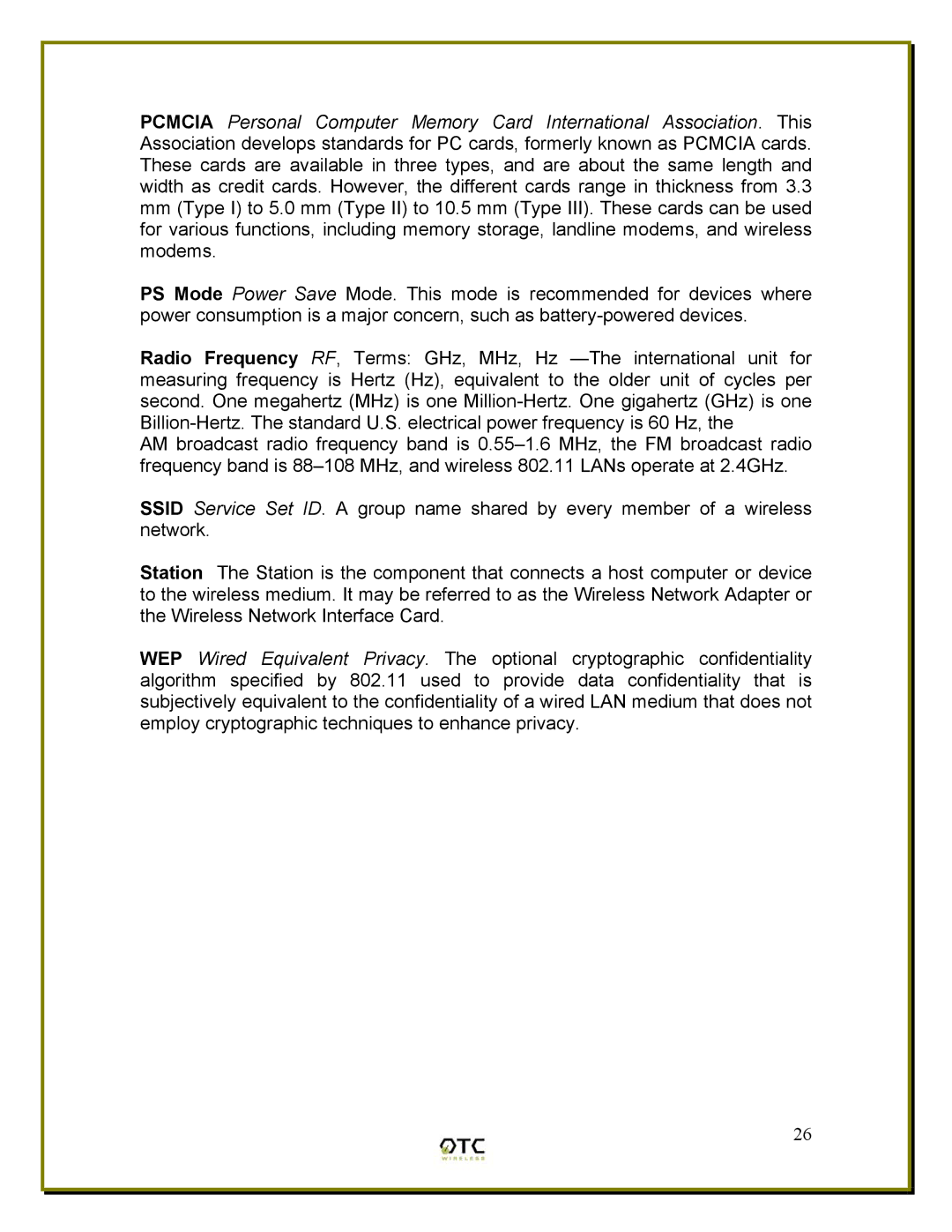
PCMCIA Personal Computer Memory Card International Association. This Association develops standards for PC cards, formerly known as PCMCIA cards. These cards are available in three types, and are about the same length and width as credit cards. However, the different cards range in thickness from 3.3
mm(Type I) to 5.0 mm (Type II) to 10.5 mm (Type III). These cards can be used for various functions, including memory storage, landline modems, and wireless modems.
PS Mode Power Save Mode. This mode is recommended for devices where power consumption is a major concern, such as
Radio Frequency RF, Terms: GHz, MHz, Hz
AM broadcast radio frequency band is
SSID Service Set ID. A group name shared by every member of a wireless network.
Station The Station is the component that connects a host computer or device to the wireless medium. It may be referred to as the Wireless Network Adapter or the Wireless Network Interface Card.
WEP Wired Equivalent Privacy. The optional cryptographic confidentiality algorithm specified by 802.11 used to provide data confidentiality that is subjectively equivalent to the confidentiality of a wired LAN medium that does not employ cryptographic techniques to enhance privacy.
26
